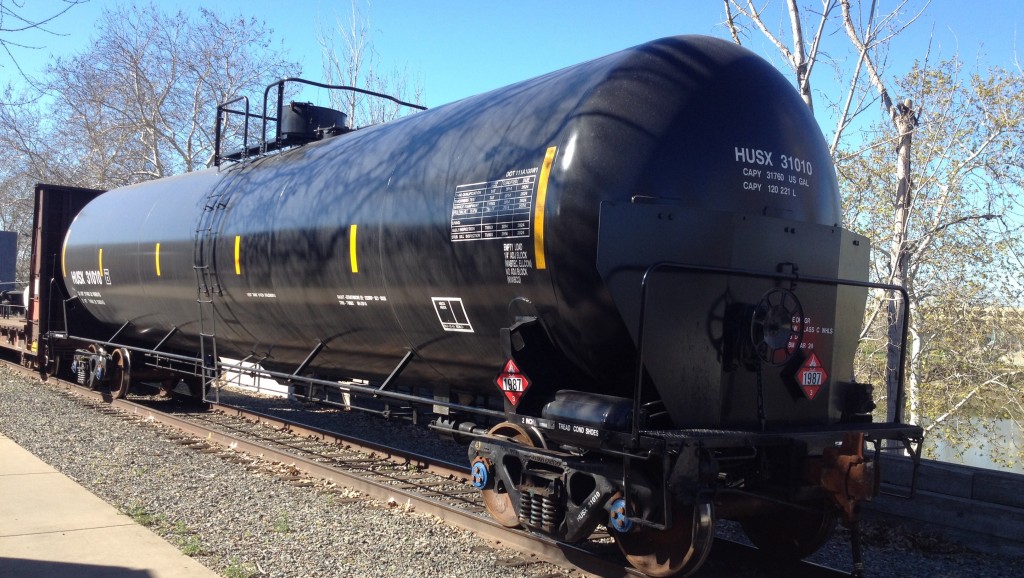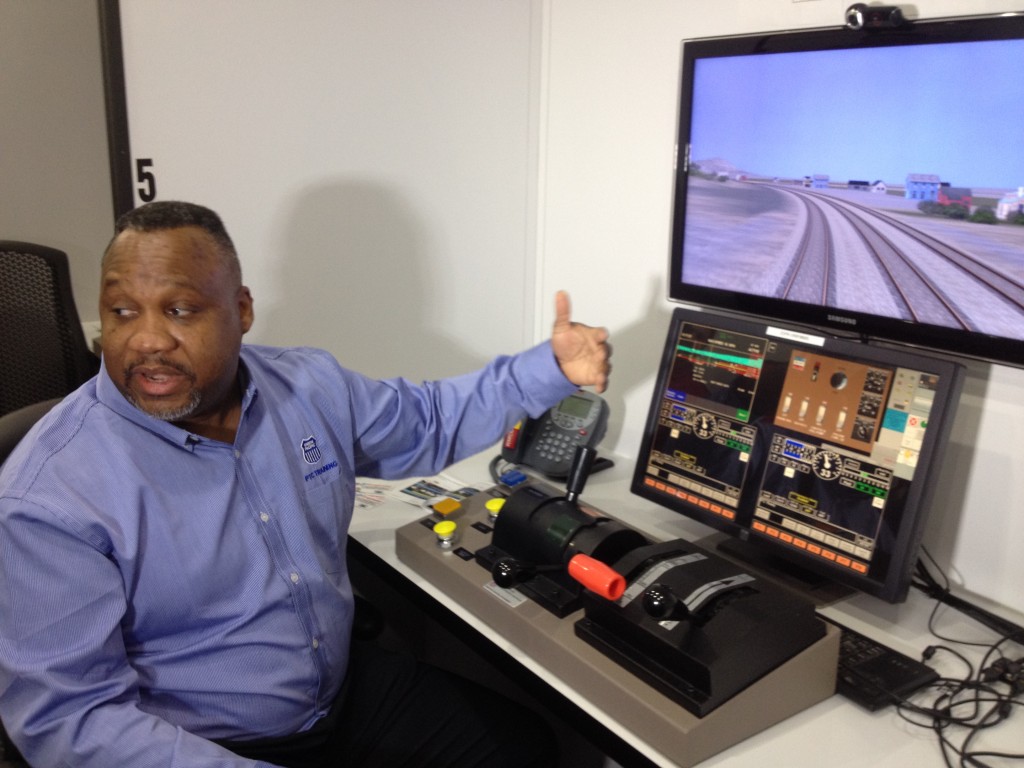
Facing growing apprehension among Californians, railroads and oil companies are trying to allay fears over the dangers of hauling crude oil into the state.
Tensions have been heightened by a spate of derailments, as well as a recently unearthed government report with some sobering projections for the potential cost to life and property from such incidents in coming years. Federal regulators are weighing stricter rules governing everything from modernized braking systems to new speed limits.
In a rare move Tuesday in Sacramento, officials with California’s two major railroads, Union Pacific and BNSF, held a media briefing explaining safety measures ranging from computerized stability controls to special foam for choking out fires.
At the California State Railroad Museum, Pat Brady, a hazardous materials manager for BNSF, showed off a newer model tank car with half-inch thick “head shields” – metal plates extending halfway up on either end. The car was also equipped with “skid protection,” Brady said, pointing to a nozzle underneath that’s designed to break away in a derailment, leaving the valve itself intact, to avert spills.
This tank car, the CPC-1232, is supposed to be safer and harder to puncture than the older DOT-111 version, but it’s facing skepticism after several exploded last week when a train hauling North Dakota crude through West Virginia derailed.

Industry officials at the Sacramento briefing were reluctant to comment about that incident, saying not all the facts are in yet, but several emphasized the importance of keeping trains from derailing to begin with, and claiming that more than 99.99 percent of such shipments arrive safely.
